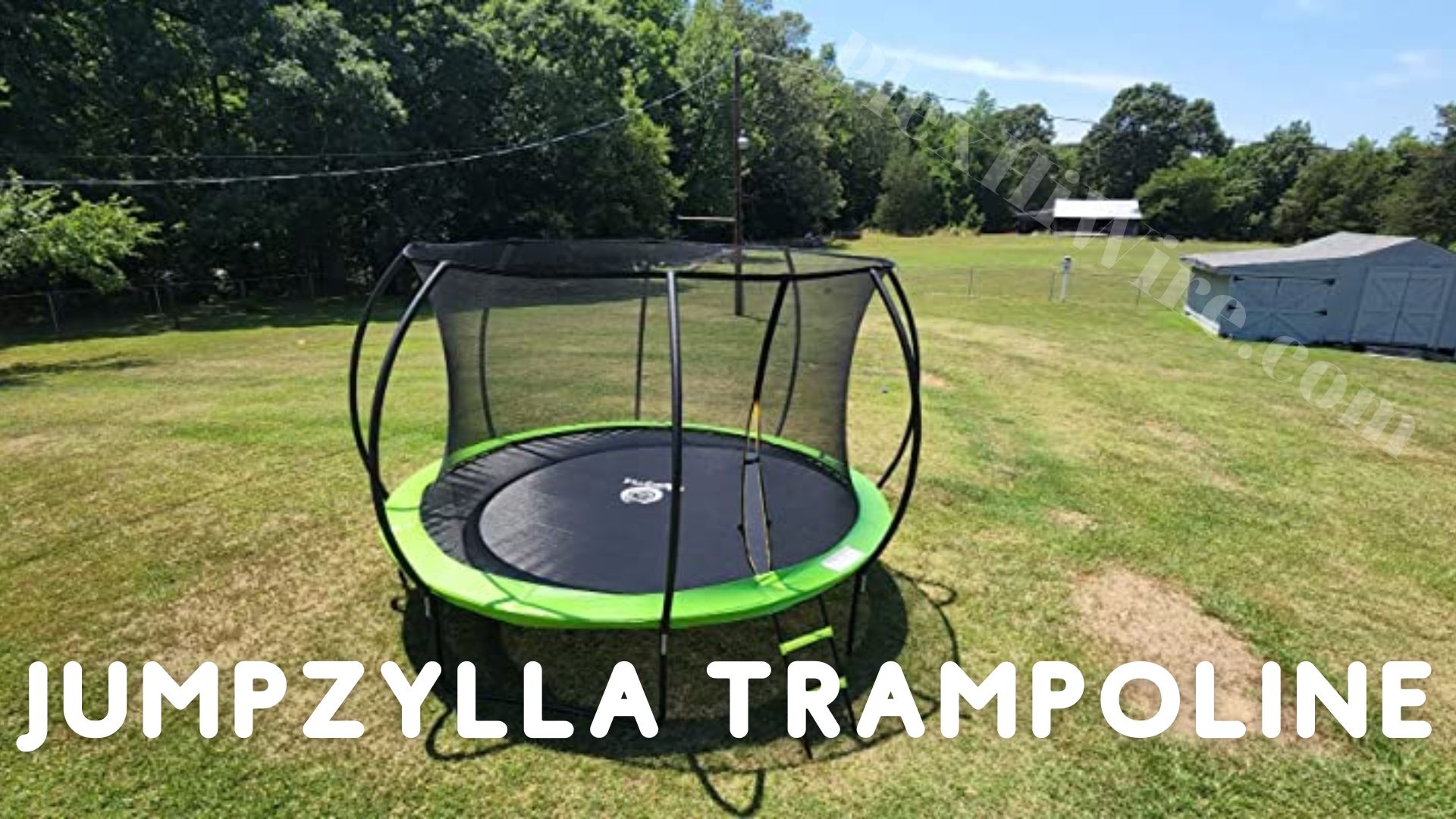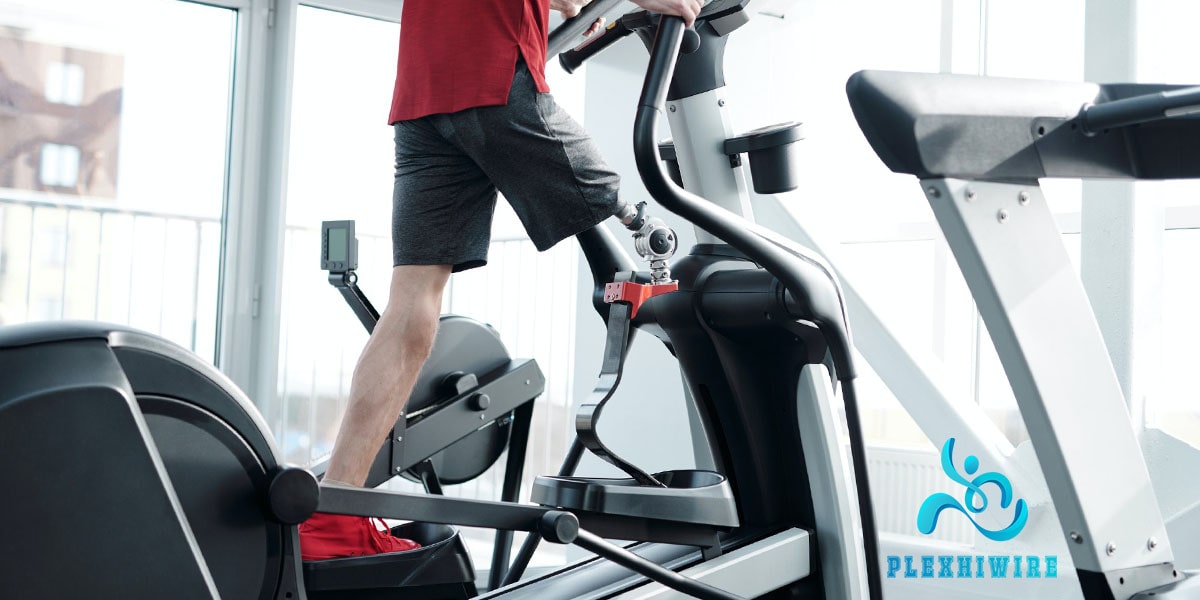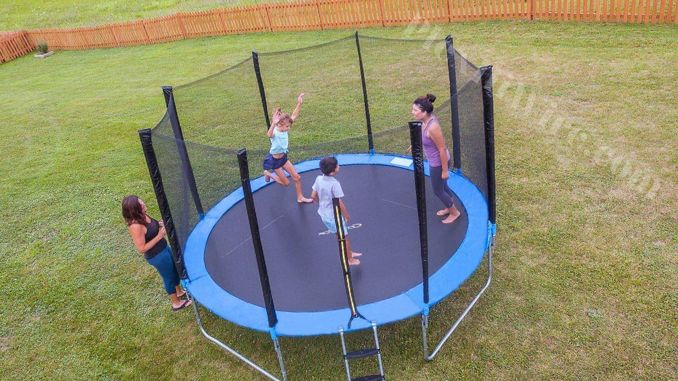What Speed Should I Workout on a Stationary Bike?
Are you looking for an effective way to shed those extra pounds and get into shape? Have you considered exercising on a stationary bike? Not only can it be a great form of aerobic exercise, but it’s also fun and uncomplicated to use. Plus, once you’ve got the hang of cycling on your stationary bike, finding the right speed can help take your workout results up a notch! In the post “What Speed Should I Workout on Stationary Bike?”, we’ll discuss what speed should I cycle on my stationary bike and why it’s important. We’ll go over ways you can adjust your pace during workouts to challenge yourself and avoid boredom and how to figure out which speeds will give you the best calorie burn.
You know. Working out on a stationary bike can be an effective way to burn calories, get cardio exercise, and tone your muscles depending on the settings you use. When it comes to setting the difficulty level of your workout, one of the most important decisions is how fast or slow you should pedal. After all, choosing an exercise speed impacts not only how comfortable or difficult your workout may be but also how effective it will be in improving your physical health. So break away from your gym routine today – let’s start cycling!
- What Speed Should I Workout on a Stationary Bike?
- What are the Benefits of Different Speeds on a Stationary Bike Workout Routine?
- What Speed Should I Workout on a Stationary Bike?
- How Can You Find the Right Speed on a Stationary Bike for Your Fitness Goals?
- The Importance of Listening to Your Body and Making Adjustments Accordingly
- Should You Increase or Decrease the Speed During a Workout Session?
- Tips for Maintaining the Right Speed During a Ride on a Stationary Bike
- Safety Precautions for Using a Stationary Bike at Higher Speeds
- Conclusion
What are the Benefits of Different Speeds on a Stationary Bike Workout Routine?
One of the advantages of using a stationary bike is the ability to adjust the resistance and speed of the pedals. These factors can have a significant impact on the effectiveness of your workout routine and can provide a range of benefits.
One of the primary benefits of incorporating different speeds into your stationary bike workout is improved cardiovascular health. When you increase your speed, you engage your cardiovascular system by increasing your heart rate and breathing frequency. This causes your heart and lungs to work harder, which can strengthen these organs and improve their overall function. Additionally, by regularly challenging your cardiovascular system, you can reduce the risk of heart disease, stroke, and other related conditions.
Another advantage of adjusting your bike’s speed is that it can help you burn more calories. When you increase your speed and resistance, your body expends more energy, leading to a greater caloric burn. This can be especially helpful if weight loss is your goal.
Furthermore, varying your speeds can help improve your muscular endurance and tone. By pedaling at different speeds, you can target different muscle groups and create a more well-rounded workout routine. For example, a slower, more controlled pace may work your lower body muscles more effectively, while a faster pace can engage your core and upper body.
Incorporating varying speeds into your stationary bike workout routine can also prevent boredom and monotony. Mixing things up will keep your mind engaged and motivated, making it less likely that you will give up on your exercise routine.
Finally, regular use of a stationary bike can have a positive impact on mental health. Exercise has been shown to release endorphins, which can improve mood and reduce stress levels. By using a stationary bike and varying your speed and resistance, you can get a great workout while improving your overall mental well-being.
What Speed Should I Workout on a Stationary Bike?
Cycling on a stationary bike is a popular form of exercise that is both low-impact and effective in improving cardiovascular fitness. One common question that beginners ask is about the ideal speed they should maintain when cycling on a stationary bike. The answer to this question lies in the concept of “cadence,” which refers to the number of revolutions per minute (RPM) that the pedals make.
Experts recommend that when cycling on a stationary bike, the ideal cadence for flat ground (low to moderate resistance) is between 80 and 100 RPM. This means that the pedals should make 80 to 100 full circles per minute. Maintaining this cadence is important because it helps to optimize the cardiovascular benefits of cycling, while simultaneously limiting the risk of experiencing fatigue, joint pain, and injury.
On the other hand, when tackling a hill or any other situation where a higher resistance is required, the ideal cadence is between 60 and 80 RPM. This is because maintaining a high cadence on high resistance can cause undue strain on the knees and other joints, leading to potential injuries and discomfort. Instead, a slower cadence, coupled with higher resistance, allows for a more effective workout that increases endurance, strengthens muscles, and burns calories.
It is worth noting that maintaining the ideal cadence takes practice and consistency. Beginners may initially have a hard time achieving the recommended RPM levels, but with time and regular practice, it becomes easier. To facilitate reaching the recommended RPM, experts advise adjusting the resistance level as necessary. For example, individuals who struggle to maintain 60 RPM on hills should decrease the resistance, while those who find it too easy should increase the resistance to feel the burn in their legs.
See more: How to Clean an Exercise Bike
How Can You Find the Right Speed on a Stationary Bike for Your Fitness Goals?
Riding a stationary bike is an excellent way to improve cardiovascular health and burn calories. However, it is essential to find the right speed on a stationary bike that aligns with your fitness goals. Here are some tips to help you find the right speed on a stationary bike.
Set realistic goals: Before starting any workout routine, it is important to set realistic goals. This will help you to identify the right speed on the stationary bike that will help you achieve your fitness goals. Determine whether you want to improve endurance, burn calories, or build strength.
Determine your current fitness level: Assess your current fitness level before starting a stationary bike workout. If you are a beginner, start with a low to moderate speed and gradually increase your speed as you become more comfortable.
Use heart rate zones: Using heart rate zones can help you to determine the right speed on the stationary bike for your fitness goals. For example, if you want to burn calories, aim for a heart rate that is between 60-70% of your maximum heart rate. This will help you to burn fat efficiently.
Monitor your progress: It is important to monitor your progress to ensure that you are working at the right speed to achieve your fitness goals. Use a fitness tracker or heart rate monitor to track your progress and adjust your speed accordingly.
The Importance of Listening to Your Body and Making Adjustments Accordingly
When working out on a stationary bike, it is crucial to pay attention to the signals your body is sending you and make adjustments in your speed and resistance accordingly. Your body is the best indicator of what it can handle and pushing yourself too hard or too fast could result in injury or an ineffective workout.
There are several physiological factors that influence how your body responds to exercise, including heart rate, breathing rate, and muscle fatigue. By monitoring these signals and adjusting your speed and resistance accordingly, you can maximize the effectiveness of your workout while minimizing the risk of injury.
For example, if you notice that your heart rate is consistently high and you are struggling to keep up with the pace, it may be time to reduce your speed or resistance. This will allow your body to recover and get back into a safe and effective workout zone. On the other hand, if you are feeling energized and your breathing is steady, it may be time to increase your intensity and challenge yourself further.
It is also important to recognize the difference between discomfort and pain. Discomfort is a normal part of exercise and indicates that your body is working hard to reach your fitness goals. However, if you experience pain, such as sharp or stabbing sensations, it is important to slow down or stop immediately and seek medical attention if necessary.
Should You Increase or Decrease the Speed During a Workout Session?
When it comes to a stationary bike workout session, the question of whether to increase or decrease the speed can be a bit tricky. There are different factors that come into play, such as the fitness level of the individual, the duration of the workout, and the specific goals they wish to achieve.
For beginners, it usually makes sense to start with a moderate speed and gradually increase it during the session. This approach allows their bodies to adjust to the movement and intensity, reducing the risk of injuries or exhaustion. On the other hand, experienced riders may benefit from faster speeds as it challenges their muscles and increases their heart rate, leading to more significant calorie and fat burning.
However, it’s crucial to note that speed alone should not be the only focus of a workout session. Many stationary bikes come with adjustable resistance levels, which can create more significant challenges for the rider’s muscles and cardiovascular system. Hence, adjusting the resistance levels alongside the speed can lead to a more comprehensive and effective workout routine.
Another point to consider is the duration of the workout. For shorter sessions, higher speeds may be better since they can help the rider achieve maximum intensity in a shorter time. But for longer workouts, a reasonable pace that maintains a heart rate within the target zone can be more sustainable and potentially lead to better outcomes.
Tips for Maintaining the Right Speed During a Ride on a Stationary Bike
Maintaining the right speed on a stationary bike is crucial to ensure you are getting the most out of your workout. Here are some tips to maintain the right speed during your ride:
Begin at a slower pace: Starting off slow is essential to warm up your muscles and collect your pace. This can help prevent injury and improve your performance as you build up speed. Try to cycle at a steady pace for the first 5-10 minutes.
Use the resistance: Adjusting the resistance on your bike can add more challenge to your workout and help you maintain a consistent speed. By increasing the resistance, you can work different muscle groups and build strength.
Keep a steady rate of pedaling: A consistent pedaling rate of around 80 to 100 revolutions per minute (RPM) is recommended to achieve the best results. You should aim to maintain this rate throughout your ride, avoiding sudden bursts of energy or slow-downs.
Focus on your breathing: It’s important to take deep breaths while cycling to maintain your heart rate and provide your muscles with the required oxygen. Proper breathing will prevent muscle fatigue and help you continue your workout without any disruption.
Monitor your heart rate: Monitoring your heart rate is essential to track your progress and avoid pushing too hard. You should ensure that you stay in your target heart rate zone, which is typically between 50-85% of your maximum heart rate.
Know more: Strategies for Staying Motivated While Riding a Spin Bike
Safety Precautions for Using a Stationary Bike at Higher Speeds
When cycling at higher speeds, it is essential to take appropriate safety precautions to avoid potential injuries. These precautions are necessary to ensure a safe and effective workout session and contribute to the overall fitness goal.
One of the most important safety precautions when cycling at high speeds is to wear proper cycling attire. Tight-fitting clothing allows for better mobility and helps prevent the fabric from getting caught in the pedals or other moving parts of the bike. It’s also beneficial to wear appropriate footwear, such as cycling shoes, that can accommodate the increased pressure and force exerted on the pedals when cycling at top speeds. Wearing a helmet is also critical for protecting the head from potential injuries in case of falls or accidents.
Another crucial safety measure when using a stationary bike at higher speeds is to ensure that the bike is set up correctly and is well-maintained. This includes checking and adjusting the handlebars, seat height and pedals to the correct position, which will allow for a comfortable and stable position to help prevent unwanted accidents or falls. The bike should also be checked for any maintenance issues, such as loose bolts, worn-out chains, or squeaky brakes, which can cause accidents at higher speeds.
When using a stationary bike at higher speeds, it is essential to stay hydrated to avoid dehydration, which can cause fatigue, cramps, or dizziness. It is recommended to drink water before beginning the exercise and to keep a water bottle handy throughout the workout session to replenish lost fluids.
Conclusion
Working out on a stationary bike is a great way to get in shape and stay fit, but it’s important to know what speed you should be riding at. After looking at the benefits of slow, steady endurance exercises and higher intensity intervals, it’s clear that there are many different speeds you can incorporate into your routine to achieve different results. If you need help deciding, then simply consult with a fitness coach or instructor who can provide personalized advice catered to you.
Ultimately, the speed at which you should be working out on a stationary bike depends on your fitness levels and goals. If you’re just getting into regular exercise, then start with low-intensity sessions and gradually increase the intensity as your fitness progresses. For those of you looking to take it to the next level, interval training or higher-intensity sessions would be beneficial. Whatever speed you choose to ride at, don’t forget that recovery days are an essential part of any workout routine. This is because it helps your body recover from intense physical activity and prevents overtraining. Additionally, make sure to stay periodical in your exercise regime for optimal results and keep regiment changes small as this will help keep you motivated and prevent burn-out. Finally, always remember to listen to your body, if something doesn’t feel right then slow down or take a break!
Know more here: plexhiwire.com






